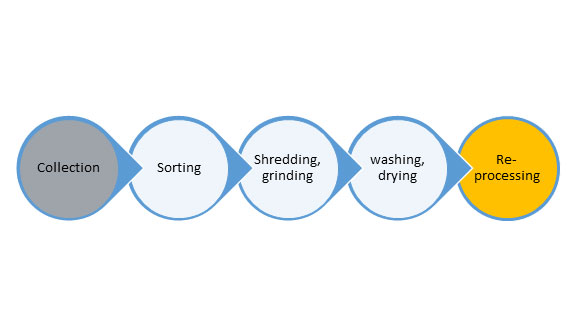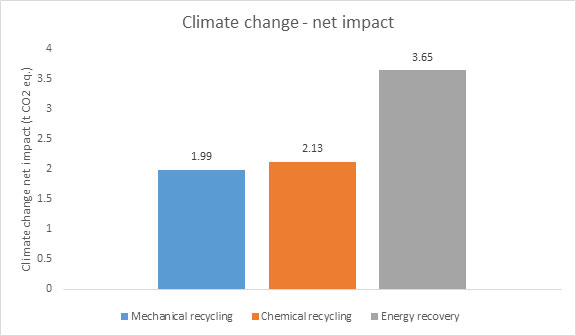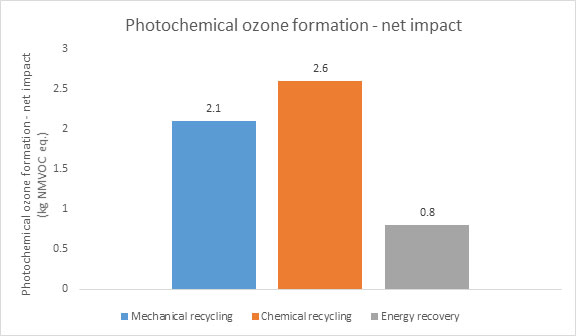
The mechanical recycling steps usually consist of collection, sorting, washing, drying, grinding and finally compounding and pelletising. These steps are dependent on the waste composition. They may follow a different order or might occur multiple times to ensure appropriate processing.
All end-of-life thermoplastics can be mechanically recycled with limited quality impairment, depending on the applied strategy. In order to be recycled, plastics have to be sorted according to their material type. The initial sorting of plastics can be manual, which is associated with extensive labour, or automated. Sorting techniques include,
- Float-Sink Sorting (based on density)
- Froth–Flotation Sorting
- Near-Infrared Sorting
- X-Ray Fluorescence
- Laser-Aided Identification
- Marker Systems
The aforementioned techniques can be used in series or individually to achieve the desired separation and purity and their implementation depends on waste stream and available capital investment. During the mechanical recycling process, the material is manipulated and transformation steps include shredding, grinding, sieving, separation by density or other more complex sorting processes.
Mechanical recycling is the most widely employed recycling process to treat primary (industrial) and secondary (post customer) plastic waste in Europe. The method is established for the recovery of materials including polyethylene (PE), polypropylene (pp) and polyethylene terephthalate (PET).
The quality of the reclaimed materials is dependent on the quality of the plastic waste stream. Plastics undergo physical and chemical changes during their service life as well as during processing and recycling steps. Polymers suffer from oxidative reactions and these oxidative processes enhance the thermal and photo-degradation of the recyclate. Formation of the oxidative moieties further consumes the significant part of the polymer stabilisers, which results in the decrease of the long-term stability as well as mechanical properties. Determination of the degradation degree of the waste plastic is important as it has an effect on the mechanical properties, stability and future performance of the recycled products (Vilaplana and Karlsson, 2008).
In terms of the waste stream composition, the plastic stream that provides the clean, single type thermoplastic is the best for mechanical recycling. The contaminated mixed plastic waste streams that are hard to sort and separate present a challenge as they require additional washing and sorting steps to remove impurities and contaminants.
Mechanical recycling is generally the most cost effective approach, however with limitations. The profitability and economic viability depends on the material that is being recycled and the degree of contamination of the waste stream. Other factors that affect overall costs and should be taken into account include collection fees, transportation fees, efficiency of the process, type of material, etc. Although cost effective, if not combined with additional techniques, there are limitations on the quality of the material obtained. In this respect, cost efficiency is strongly associated with the purity and material type.
Environmental burdens of plastic waste collection, transportation, and the recycling process usually are less than the environmental burdens associated with the production of virgin material.
One of the study conducted by Jeswani et al., (2021) compared environmental impacts of producing mixed commodity plastics with their end-of-life treatment via chemical (pyrolysis), mechanical recycling and energy recovery, which consisted of 30% municipal solid waste incineration and 70% combustion of refuse-derived fuel. The study showed that climate change net impact was the lowest for mechanical recycling (1.99 t CO2 eq./t plastics) compared to other treatments (Figure 1). The same study showed that mechanical recycling has lower photochemical ozone formation net impact (2.1 kg NMVOC eq) compared to chemical recycling (2.6 kg NMVOC eq).

Figure 1. Environmental impacts of producing mixed commodity plastics with their end-of-life treatment. Data from Jeswani et al., (2021).

Figure 2 Photochemical ozone formation net impact of producing mixed commodity plastics with their end-of-life treatment. Data from Jeswani et al., (2021).
- Less waste is sent to landfills
- Resources used to produce virgin polymers are reduced
- Reduction in plastic pollution and associated environmental impacts
- Reduction of greenhouse gas emissions
- Mixed and contaminated plastic waste streams create difficulties in sorting and consequently recycling
- Different grades of the same polymer of plastic type increase the burden of recovered material contamination
- Mixed plastic waste and grade contamination, poses a challenge due to the variations in properties such as melt flow index and the presence of certain additives (such as halogenated compounds and SVHCs) may limit their use and market application
- Plastic waste, either during their utilisation time or during their time in the waste stream might adsorb or absorb persistent organic pollutants (POPs)
- Multi-layer materials are difficult to sort and separate
- Polymer degradation occurs during the recycling processes. For mechanical recycling this might include thermal-mechanical degradation, therefore for certain material types (e,g. PET) the materials can only be recycled for a limited number of cycles
- Quality loss after cycles of recycling resulting in the lower-grade polymers
- Lack of standardisation across recycling operations and organisations
Jeswani, H., Krüger, C., Russ, M., Horlacher, M., Antony, F., Hann, S. and Azapagic, A., 2021. Life cycle environmental impacts of chemical recycling via pyrolysis of mixed plastic waste in comparison with mechanical recycling and energy recovery. Science of The Total Environment, 769, p.144483.
Plastics – the Facts 2020. Plastics Europe • Enabling a sustainable future. [online] Available at: <https://www.plasticseurope.org/en/focus-areas/circular-economy/zero-plastics-landfill/recycling-and-energy-recovery>
European Bioplastics e.V., 2020. Mechanical Recycling. [online] Available at: <https://docs.european-bioplastics.org/publications/bp/EUBP_BP_Mechanical_recycling.pdf> [Accessed 10 December 2021].
Vilaplana, F. and Karlsson, S., 2008. Quality Concepts for the Improved Use of Recycled Polymeric Materials: A Review. Macromolecular Materials and Engineering, 293(4), pp.274-297.